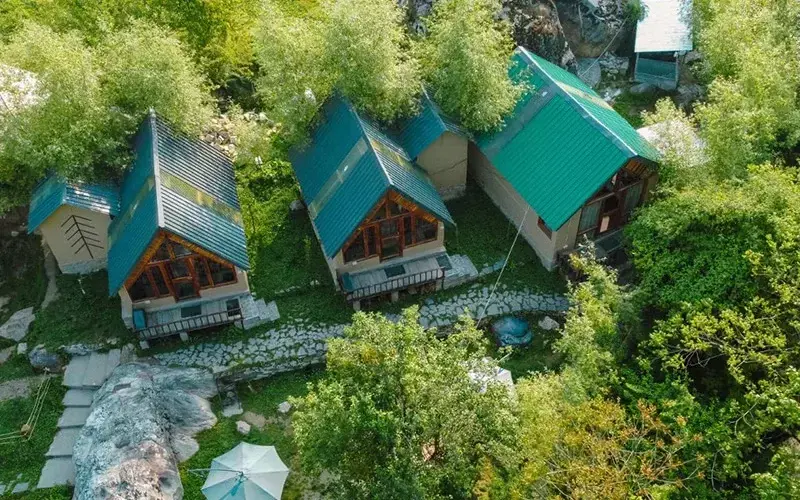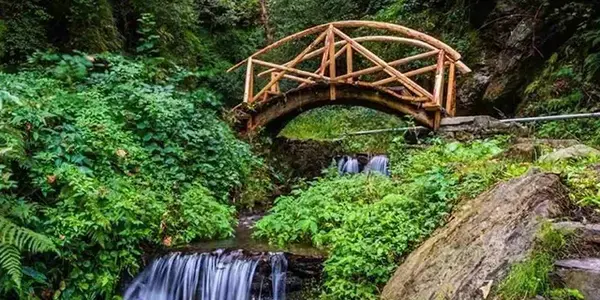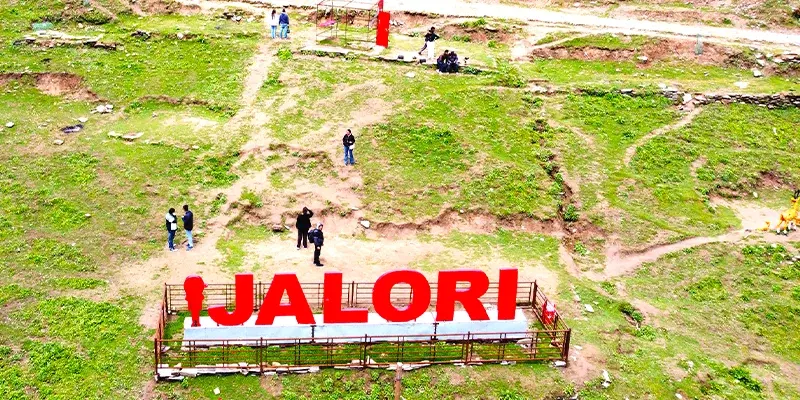

Bahu Temple Jibhi 🛕 is a hidden shrine tucked in Bahu village, just outside the tourist map but close enough to explore from Jibhi. The trail starts at Bahu Lake 🏞️, a small forest pond often missed by travelers. The temple itself is wooden and simple — not flashy, but deeply spiritual. Built by locals centuries ago, it honors a guardian deity believed to protect the village 🧓.
The temple’s peaceful location has made it a regular stop for villagers who still visit during local festivals 🎉. Unlike larger te ...

Hotels In Jibhi
Stay close to rivers, forests, and peaceful mountain views.

Places To Visit In Jibhi
Top places to visit in Jibhi, naturally beautiful.

Images Of Jibhi
Experience Jibhi’s calm forests and rivers through stunning photos
Hotels In Jibhi
Places To Visit In Jibhi
Images Of Jibhi
Summer (Mar–Jun): Light cottons, trekking shoes, cap for sun 🧢
Monsoon (Jul–Aug): Full sleeves, rain jacket, shoes with grip 🌧️
Winter (Nov–Feb): Thermal wear, thick jackets, gloves, warm socks 🧣🧤
✅ March to June: Best time for green views and cool breeze
🍁 September to November: Golden leaves, clear skies — great for photos
⚠️ Avoid July–August: The trail becomes slippery during monsoon
💡 Travel Tip: Early morning or evening is best to avoid direct sun and enjoy the silence
Walk to Bahu Lake and picnic near the trees 🧺
Sit at the temple and listen to the birds 🌿
Explore Chaini Kothi if you're in the mood for a longer trek 🗻
Visit Bahu village for homestay meals and local stories 🏡
🥟 Siddu: Soft wheat bun with spicy filling
🍛 Rajma Chawal: Red rice with flavorful Himachali rajma
🍲 Chhole Bhature: Found in village cafés occasionally
☕ Herbal Teas: Made from forest herbs and flowers
🩹 Band-aids, ORS, paracetamol, antiseptic cream
🤕 Motion sickness or headache medicine
😷 Inhaler or anti-allergy if you’re sensitive to forest pollen
🦟 Mosquito repellent (non-toxic)
🪪 Government ID (Aadhar/Passport)
🗺️ Offline maps in case mobile signal drops
🧾 Booking confirmations for homestays
📱 Emergency numbers saved on phone and paper
March to June and September to November
Bahu Temple Jibhi 🛕 is a hidden shrine tucked in Bahu village, just outside the tourist map but close enough to explore from Jibhi. The trail starts at Bahu Lake 🏞️, a small forest pond often missed by travelers. The temple itself is wooden and simple — not flashy, but deeply spiritual. Built by locals centuries ago, it honors a guardian deity believed to protect the village 🧓.
The temple’s peaceful location has made it a regular stop for villagers who still visit during local festivals 🎉. Unlike larger temples, it has no priests or grand rituals. It’s a place to sit, breathe, and feel at peace with nature 🍃.
Bahu Temple Jibhi reflects the spiritual side of Himachal’s mountain life — quiet, modest, and rooted in nature 🌲. The temple stands strong through time, untouched by crowds, giving travelers a rare chance to connect with both the land and the people.
🗺️ Located in Bahu Village, 6 km from Jibhi: Bahu Temple sits quietly in Bahu village, about a 20-minute drive from Jibhi. It’s slightly off the main road, giving it a hidden, untouched vibe that many travelers love.
🏞️ Trail Begins at Bahu Lake: The walk to the temple starts from Bahu Lake — a small but beautiful water body surrounded by dense pine trees. The lake adds calmness to the journey and is a perfect rest stop before heading uphill.
🎫 No Entry Fee or Timings: There’s no ticket counter or time restriction. You can visit anytime during daylight hours, making it a flexible spot for those who prefer unplanned detours.
🪵 Built with Local Wood and Stone: The temple structure is traditional — simple and earthy, made with wood and stone sourced from the region. This makes it blend beautifully with its forest surroundings.
🙋♀️ Rarely Crowded — Ideal for Peace Seekers: Unlike other temples in Himachal, Bahu Temple Jibhi is often empty or visited by just a few locals. This makes it a perfect place for solo travelers or couples looking for a peaceful moment in nature.
🌲 Surrounded by Forests and Birds: The area around the temple is full of tall pine and deodar trees. You’ll often hear birds chirping and leaves rustling — perfect for photography, meditation, or journaling.
🙏 Still Important to the Locals: Even though it’s not a major tourist attraction, villagers treat this temple with great respect. Many visit on special days to seek blessings or just sit in silence.
📸 Great for Nature and Travel Photography: With no crowds and natural light filtering through the trees, the temple and its trail are great for capturing serene, unfiltered Himalayan moments.
Travelers who reach Bahu Temple Jibhi often speak more about the experience than the place itself. One solo backpacker, Aarav from Bengaluru 🎒, mentioned how he didn’t plan the visit but was guided by a local he met in Jibhi. They walked to Bahu Lake together, and then followed the trail to the temple. Aarav said it was the calmest moment of his entire trip — no tourists, no noise, just fresh mountain air and birds 🐦.
A couple from Gujarat 💑, visiting for their anniversary, told us they did a small prayer at the temple and tied a thread on a nearby tree 🌳. They didn’t wish for anything big — just peace, and said they left feeling lighter.
Locals say that the temple has never been damaged, even during heavy storms 🌧️, and people believe it has protective powers 🛡️.
Bahu Temple Jibhi might not be grand, but the quiet stories it holds make it unforgettable for those who take the path to find it.
The Himalayan Mountains are a majestic mountain range in South Asia, spanning five countries. They boast the world's highest peaks, including Mount Everest. These young, growing mountains feature rugged, snow-capped peaks, deep valleys, and glaciers. The Himalayas influence regional climate, harbor unique biodiversity, and hold cultural and spiritual significance. They attract adventurers, nature lovers, and spiritual seekers from around the world.